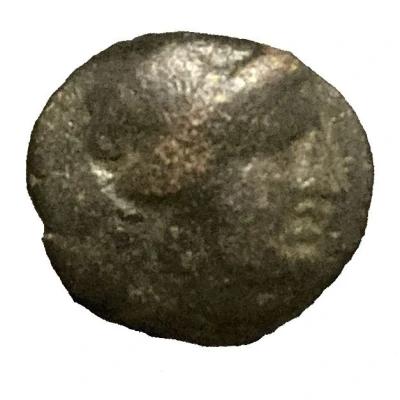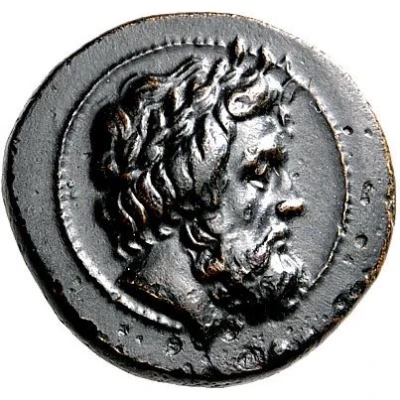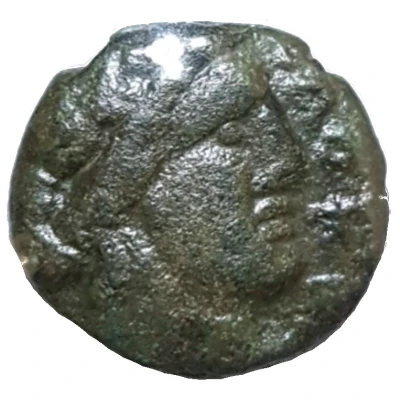


© Ambar (CC BY-SA)
Trichalkon 196 BC - 146 BC
| Bronze | 6.76 g | 18 mm |
| Issuer | Thessalian League (Thessaly) |
|---|---|
| Type | Standard circulation coin |
| Years | 196 BC - 146 BC |
| Value | Trichalkon (1⁄16) |
| Currency | Drachm |
| Composition | Bronze |
| Weight | 6.76 g |
| Diameter | 18 mm |
| Thickness | 2.8 mm |
| Shape | Round (irregular) |
| Technique | Hammered |
| Orientation | Medal alignment ↑↑ |
| Demonetized | Yes |
| Updated | 2024-10-10 |
| Numista | N#355101 |
|---|---|
| Rarity index | 93% |
Reverse
Goddess Athena Itonia, in fighting attitude to right, with helmet, poised spear in right hand and raised shield on left hand.
Script: Greek
Lettering:
ΘEΣΣA-ΛΩN
T I
M A
Translation:
Thessa ( to left, upwards ) - lon ( to right, downwards )
Tima, in two lines, to the right and left sides of the goddess
Comment
The Thessalian League was a koinon or loose confederacy of feudal-like poleis and tribes in ancient Thessaly, located in the Thessalian plain in Greece. The seat of the Thessalian League was Larissa, where D.R. Sear states this coin was probably minted, between 196 BC and 146 BC. However, Edgar Rogers further postulates that they might have been minted also between 48 and 27 BC.The Thessalian League was one of the several Greek leagues the Roman tolerated until 146 BCE, when the Roman commander Mummius razed the city of Corinth to the ground, disbanded the leagues, and informally reduced Greece to provincial status. Similar reverse type coins were minted under the Roman Empire domination of Greece, as provincial coins, from Tiberius to Gallienus, by 268 AD.
In the field of this type series, or above the spear in some other variants, of which a large number have been recorded, various monograms appear, showing the name of the Strategoi (on obv.) and the Magistratus (on rev.). In ancient Rome, a magistratus was one of the highest ranking government officers, and possessed both judicial and executive powers, and were monetary officials or moneyers with the right for minting. This coin type carries the name of magistrate Tima.
Itonia was an epithet of the Greek goddess Athena worshiped widely in Thessaly and elsewhere. The name was derived from the town of Iton in the south of Phthiotis
Several pictures of this type follow:
Images above credited to www.wildwinds.com
Their weight ranges from 6 to 8 grams and diameter from 17 to 20 mm.
Interesting fact
The Trichalkon coin was used as a means of payment for soldiers during the Thessalian League's military campaigns.



